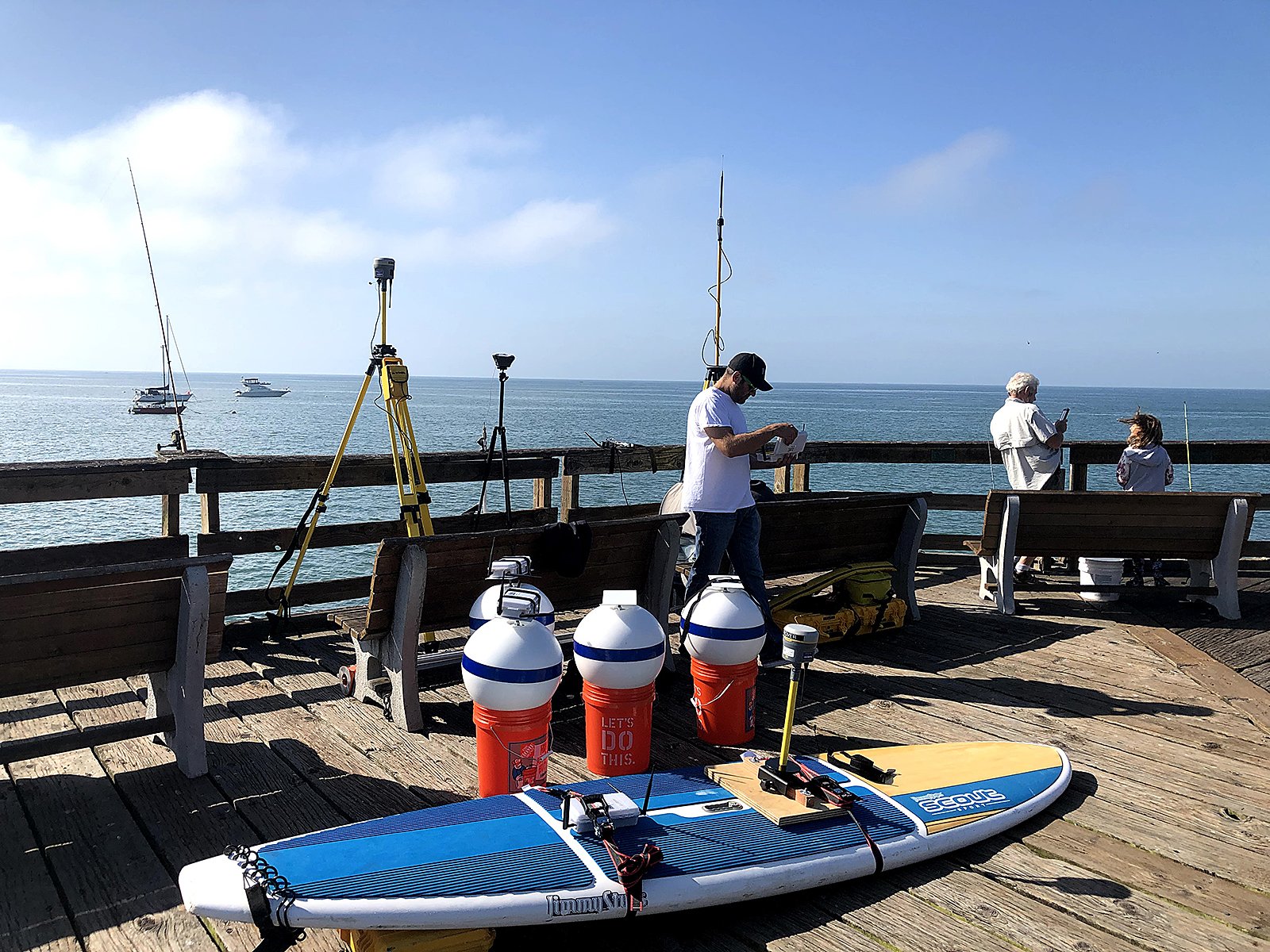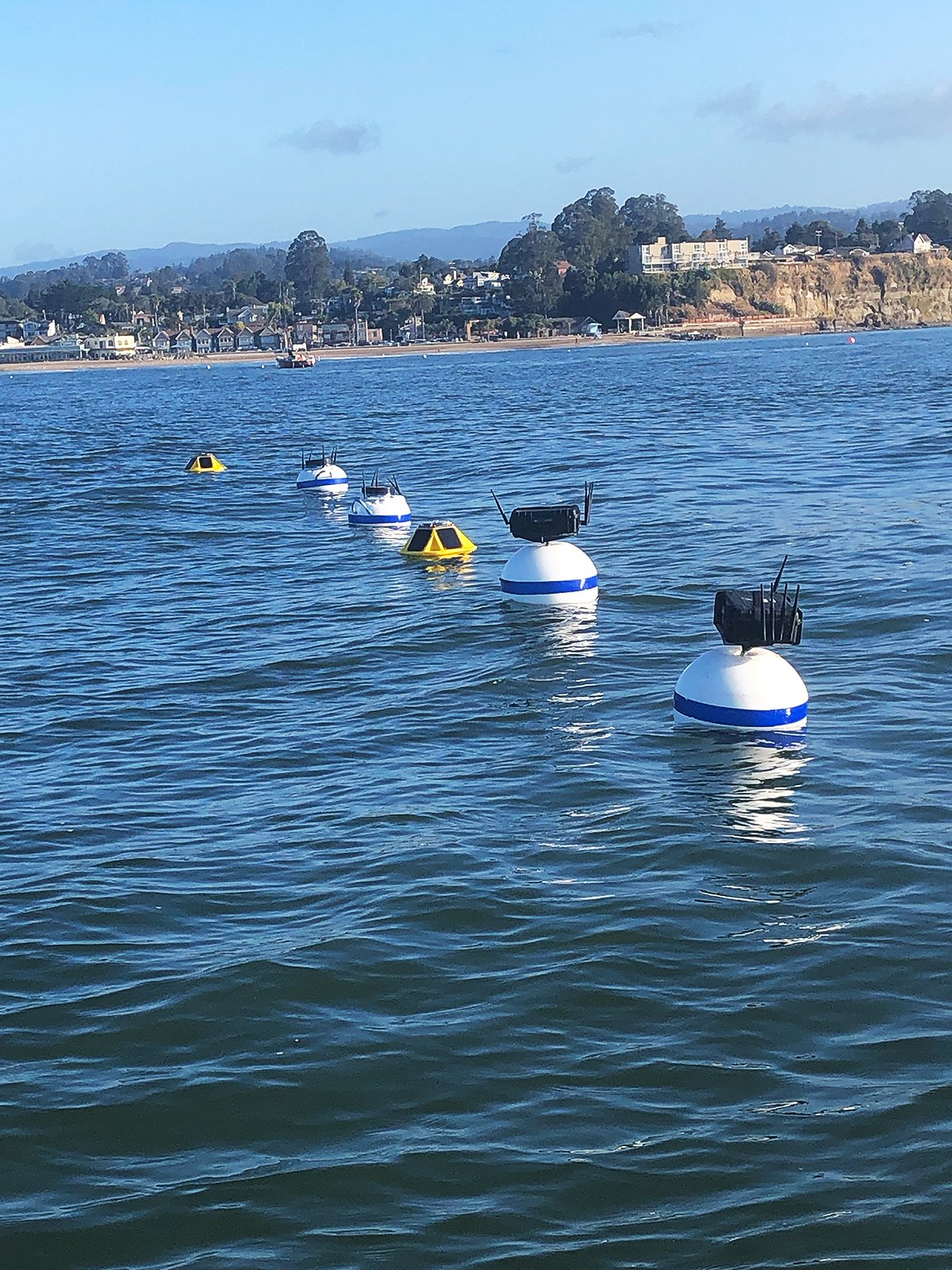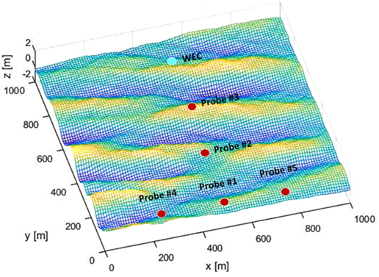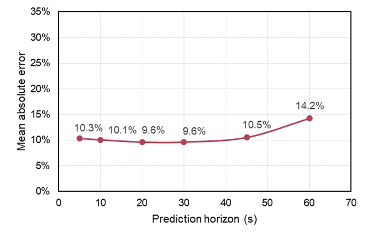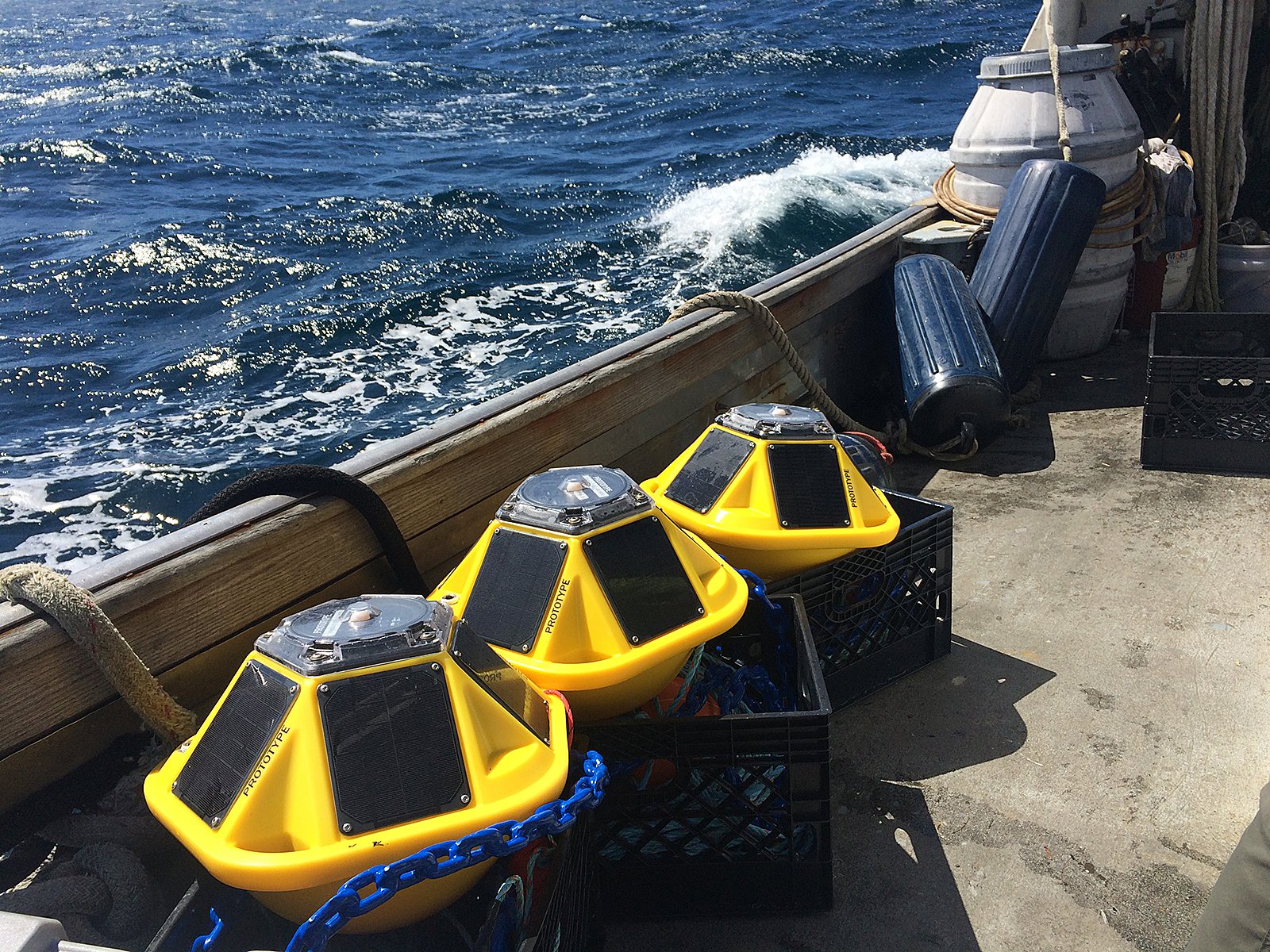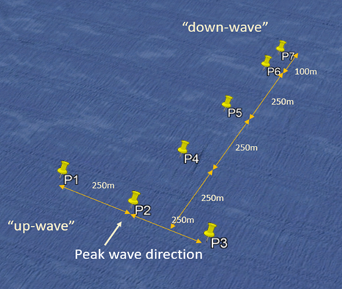PREDICTING THE UNPREDICTABLE
Deterministic Sea Wave Prediction Systems
Applications
Deterministic Sea Wave Prediction (DSWP) enables ocean waves to be predicted minutes into the future. Ocean waves are the primary driver for excitation forces and motions of systems at sea and the future knowledge of these quantities enable the utilization of powerful control algorithms to maximize power capture and minimize loads. This, in turn, provides a set of enabling capabilities that have the potential to significantly improve the economics of a wide range of marine renewable energy technologies.
-

Wave Energy
DSWP plays an important role in enabling optimal control in Wave energy conversion devices, enabling the reduction of structural loads and enhancing power absorption. Our own studies suggest that a forecasting horizon of about 30 seconds is sufficient to enable such control strategies in most WEC device architectures.
-

Floating Offshore Wind (FOW)
Incorporating DSWP in FOW systems can enhance the performance and motion response of floating offshore wind platform by integrating our system with the wind-turbine control system to enable active platform stabilization. The same system can be used to improve platform accessibility in large waves.
-

Offshore Operations
Many marine operational processes such as crane operation, personnel transfer, and helicopter landing can be improved by providing information on quiescent windows that allow for such activities to proceed in a safe and efficient manner.
Beyond these initial applications, we believe that DSWP could be used in many currently difficult-to-envision application spaces. Imagine weather prediction a century ago - maybe there were a few farmers that dreamed of having “weather prediction magic” available to them, but it would have been impossible to imagine just how much society would become to rely on these forecasts. We believe that DSWP will be similar in this way and provide a capability that will find a wide range of application spaces currently un-imaginable.
-
How it works
We utilize sensing buoy networks to identify the wave-field around our prediction target. A set of algorithms is used to propagate this wave field forward in space and time to make a prediction at our target location. Our algorithms incorporate state-of-the-art sensor-fusion and AI-based approaches that enable a numerically efficient approach even in highly non-linear sea-states.
-
Background
The current technology has been developed over a period of 6 years under a number of government-funded awards, which allowed us to de-risk the technology through a series of wave tank and in-ocean testing campaigns. We have carried out over 30 in-ocean testing field campaigns to refine our algorithms and optimize sensing hardware.
-
Competitive advantage
The main alternatives developed to our system are X-band radar-based. Radar-based wave prediction systems that require a minimum wind-speed of about 1.8m/s to enable wave sensing and prediction, which means that in many locations wave prediction can only be done during about 50% of the time, making it un-suitable for many application spaces envisioned. Furthermore our buoy networks can be setup in a manner that enable much longer wave prediction horizons.
-
Accuracy
Field testing has demonstrated a mean absolute error of < 10% for a wave prediction horizon of 30-60 seconds. Numerical sensitivity studies have shown that this is good-enough for most application spaces envisioned.

